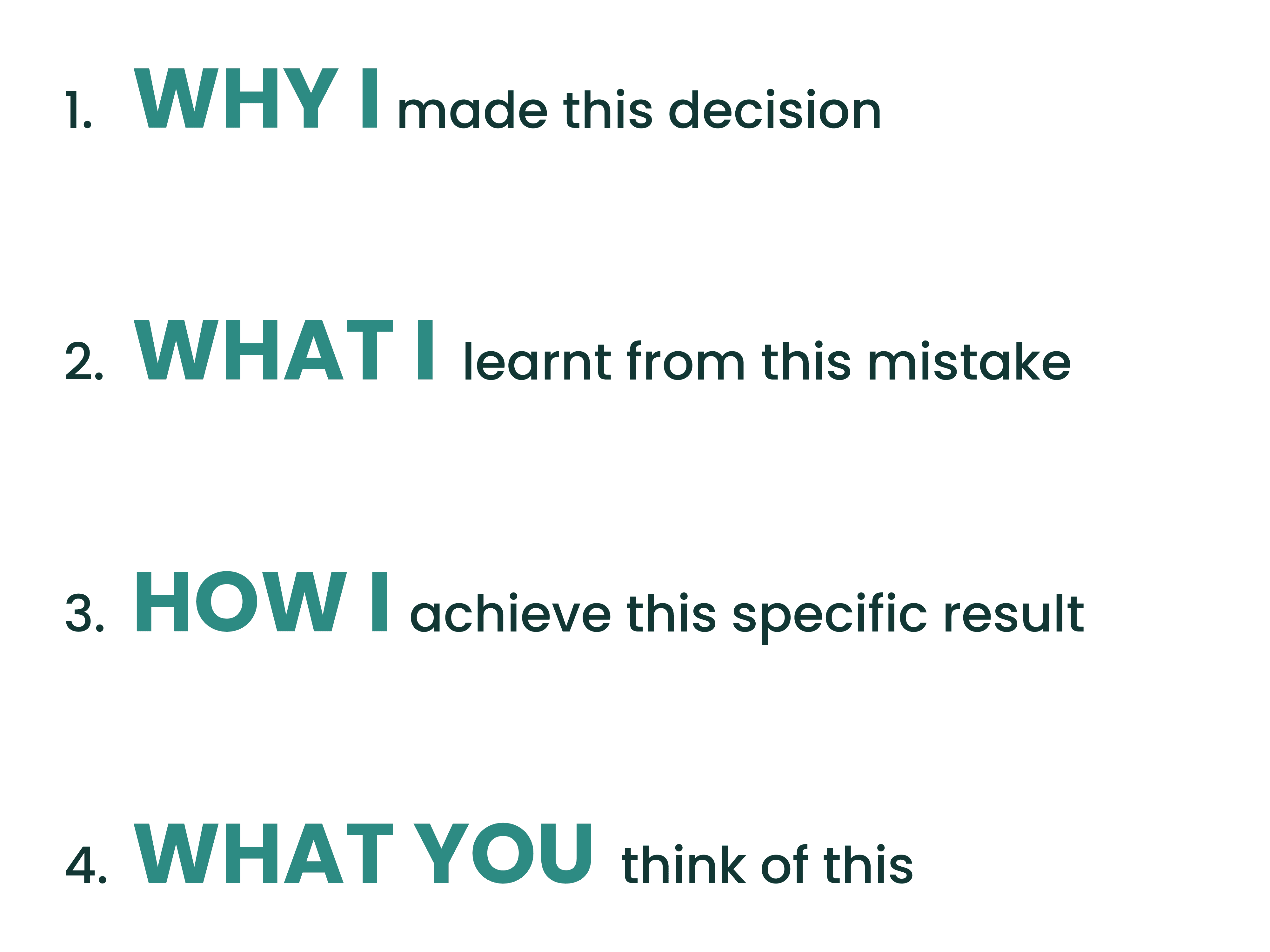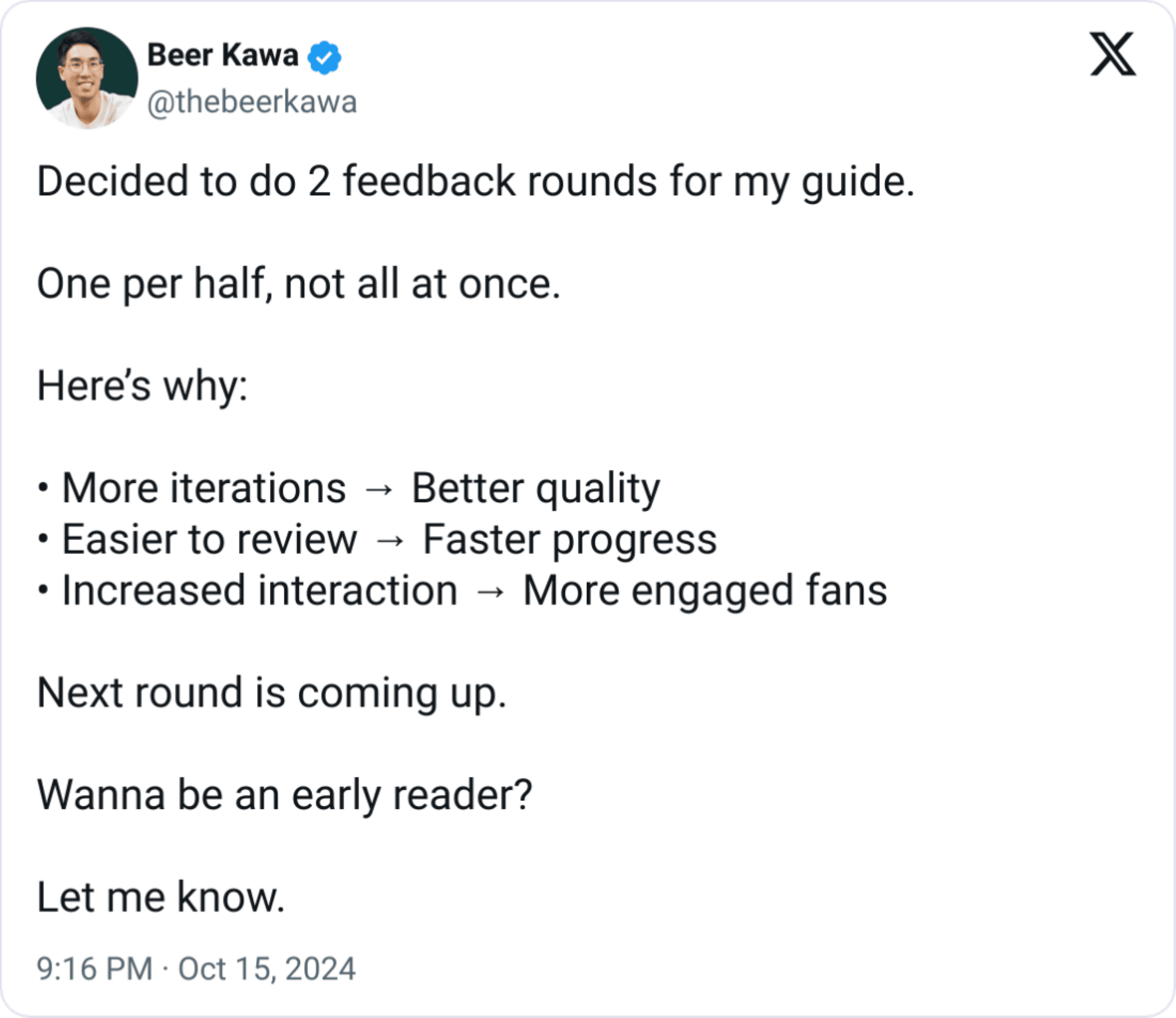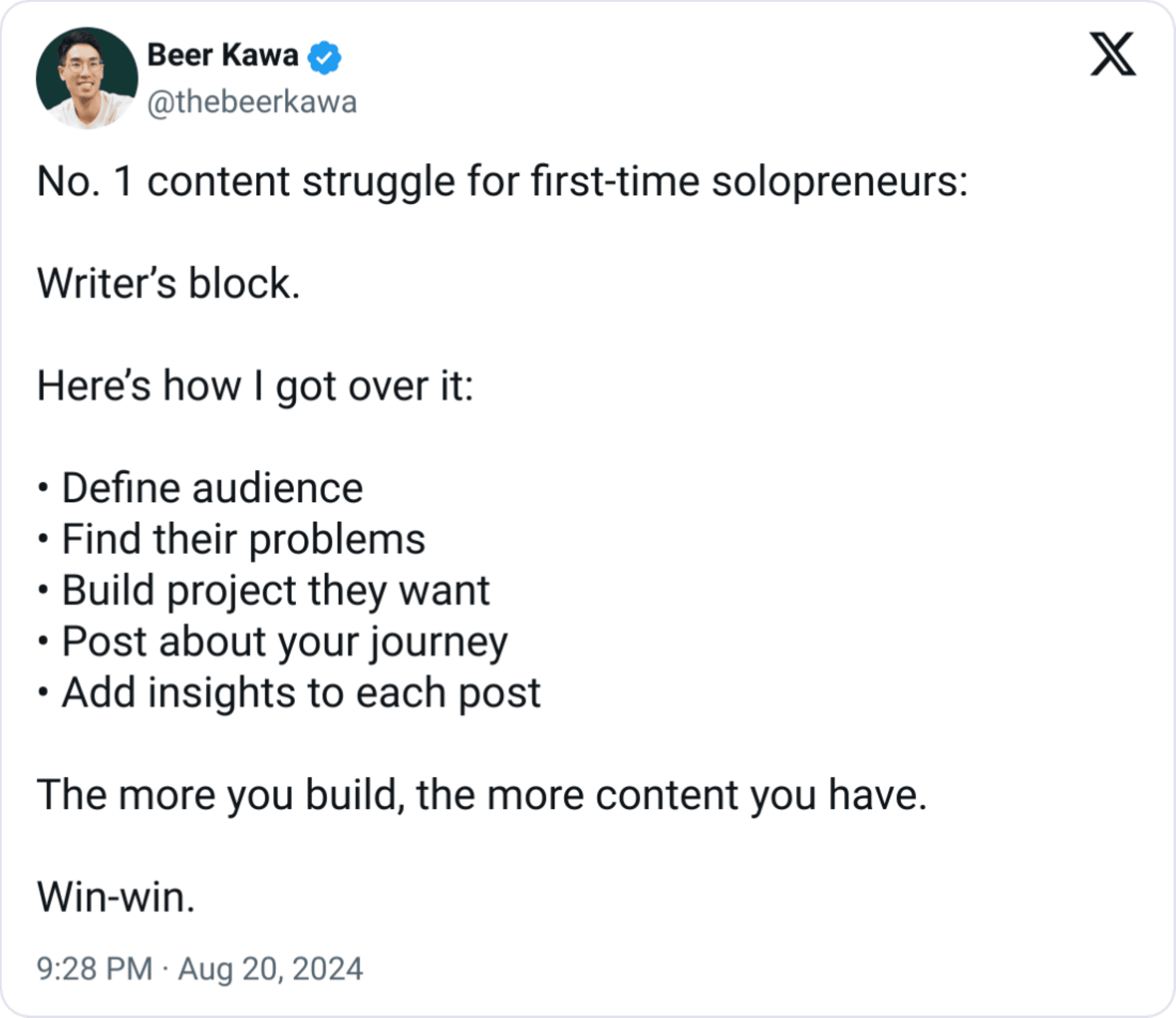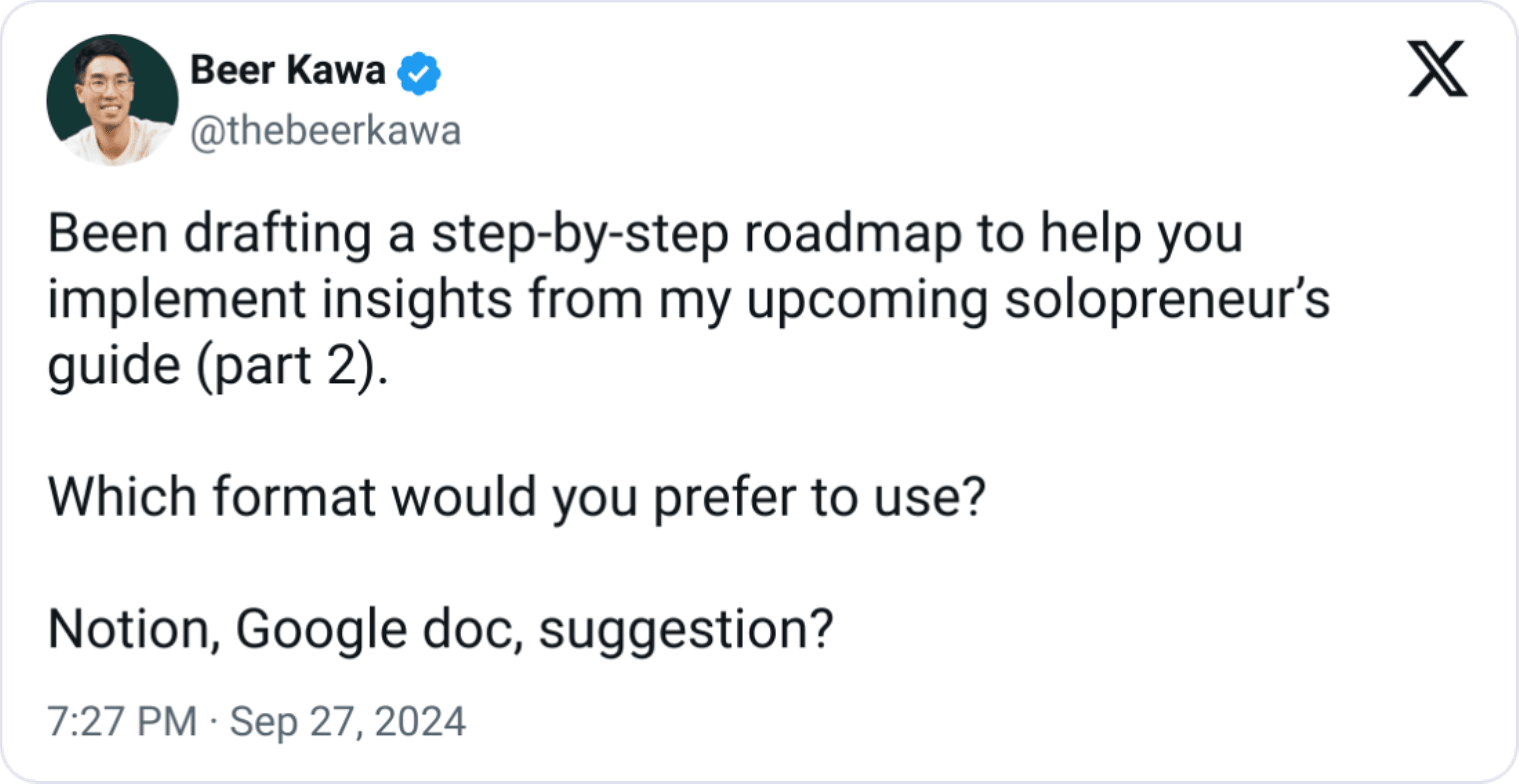How to actually build in public?
CHAPTERS
“Build in public” can be very vague.
Everyone can interpret the term differently and that’s understandable because it never has a real definition.
In most cases, it’s to be transparent with your audience by sharing regular updates of your building journey.
But for me, it goes beyond that.
Let’s address the elephant in the room first before moving on to how exactly you can share build-in-public content.
Building in public is NOT sharing screenshots
To make the most out of this approach, it’s not as simple as sharing screenshots and moving on.
When people consume your content, the one thing that they’re constantly asking themselves is “What’s in it for me?”. That’s why these screenshots on their own don’t mean anything to them as much as you first thought.
There has to be something valuable they can take away too.
And your best option for this?
The personal insights you gain along your building journey whether through your mistakes or achievements.
In fact, these are also perfect for growing your fanbase because they’re more relatable, personal, and memorable.
It’s so much more valuable for them to learn from your experience taking real action rather than from content like generic how-tos and tips.
Here’s a simple checklist to help you start thinking about what you can share:
What did you do today?
How did it make you feel?
What made it useful for my audience?
You want to put yourself into their shoes and think from their perspective.
As for how exactly?
The following is what you can do.
The four ways to share build-in-public content

1. WHY I
The first way is to share the rationale behind any key decision you made while building your infoproduct.
One thing to know first is that people hate making decisions.
There are always opportunity costs and associated risks in case you make a wrong decision.
This fact alone makes the WHY I content so valuable, especially for someone who gets stuck at a certain step of their journey because of a dilemma.
It gives a little nudge that helps them push through what they’re facing and move forward.
Here are a few things you can share:
Thought processes
Reasons for decisions
Alternatives you rejected
2. WHAT I
The second way is to share the lessons learnt from your building journey.
Similar to the first way, nobody likes to make mistakes or failures.
It’s time-consuming, feels uncomfortable, and can be perceived as your weakness.
But by opening up about them, you’ll come across as being transparent and authentic. This will position you as someone who’s willing to “go first” for your audience.
Essentially, showing that you also have skin in the game.
You’ll be able to save them so much time from making the same mistakes or failures as they learn directly from the past experiences of someone who went in the wrong direction before.
Here are a few things you can share:
Personal realisation
Ways to overcome a specific failure
Ways to avoid making a particular mistake
3. HOW I
The third way is to share the approach you used to achieve a specific result.
Naturally, people love to cheer for and follow someone’s journey if they see a series of achievements starting to pile up.
But what if you can show more than that? What if you share what it takes exactly to accomplish all these wins too?
That’s what makes the HOW I content one of the most valuable things you can share with your audience. It helps you gain their respect by proving that you know what it takes to achieve the results you preached, and positions you as someone worth following eventually.
And this will only improve your overall credibility.
Here are a few things you can share:
Frameworks
Practical tips
Step-by-step processes
4. WHAT YOU
The beauty of the build-in-public approach is that it encourages two-way communication between you and your audience.
Not only can you share valuable insights from your journey with your audience, but you can also take direct feedback from them for early validation.
This will help steer the infoproduct you’re building in the right direction just as I explained in the previous chapter.
The easiest way for this is to post a simple question to ask them for their inputs.
From here, you have the chance to dig deeper into a specific suggestion and start a conversation with them.
It’s these amazing conversations you created from this type of content that will strengthen the relationship with your audience, plus benefit others who pass by to read as well.
Found this guide valuable?
Leave your testimonial here.




